Redoutable: An interview with director Michel Hazanavicius
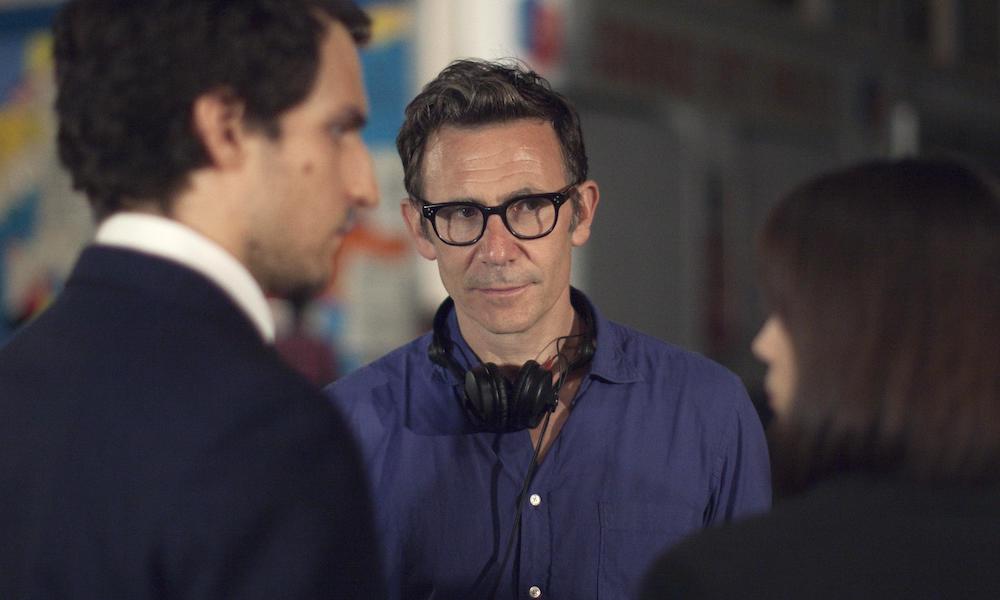
Redoubtable is the latest film from director Michel Hazanavicius, a biopic about filmmaker Jean-Luc Godard and his relationship with Anne Wiazemsky. The movie stars Louis Garrel and Stacy Martin and was shown in competition at this year’s Cannes.
Why this title, Redoubtable?
I’ve never been very good at choosing titles… I’m a great admirer of Godard, whose choice of titles is always brilliant. I’d even go as far as to venture that he picks the title first, then the film to go with it. The titles of the films he made in the sixties are all the better since each one resembles a possible self-portrait of the man he might have been: Vivre sa vie, Contempt, Le Petit Soldat, Bande à part, Breathless…
The first title I had was The Great Man, but it had a caustic overtone that I didn’t like. It could easily have been misinterpreted. On the other hand, I liked the “Belmondoesque” side of Redoubtable; it’s also reminiscent of Marginal, Incorrigible, Magni que (The Man from Acapulco)… I also like the fact that the word can have a negative or positive connotation: to say that someone is redoubtable can be a compliment just as much as a reproach. Finally, I like the idea of using the gimmick “And so goes life inside the Redoubtable”, even to end the film with it. It gives a little ironic touch that pleases me.
How did you come across Un an après (One Year Later by Anne Wiazemsky)?
Completely by chance. I had to take a train and had forgotten the book I was reading at the time. I looked for one at the station. I found Un an après and immediately saw a film.
Anne Wiazemsky wrote two books about her love story with Jean-Luc Godard. Une Année Studieuse talks about the beginning of their relationship, the way this charming yet awkward guy takes his first steps in a great Gaullist family – Anne being François Mauriac’s granddaughter – until the reception of La Chinoise at the Avignon Festival in 1967. Un an après talks about May 1968, the crisis Godard went through, his radicalisation, the disintegration of their marriage, up until their break-up. I was very touched by their story: I found it original, moving, sexy and simply beautiful.
Redoubtable has a few elements from Une Année Studieuse, but comes in the main from Un an après. When I contacted her by phone, Anne Wiazemsky had already turned down several offers. She had no desire for her book to become a film. I remember that just before we hung up, I told her it was a real shame and all the more so as I’d found the book so funny. She reacted immediately and said she too thought it was funny but no one had ever said so. And that’s how it all started.
At first sight, it’s quite surprising to see you devote a film to Jean-Luc Godard.
I can imagine, but I don’t consider this film so unexpected or even atypical. Of course Godard is a particularly complex subject. But one of the things that interested me, and helped me to believe that this film was possible, was that Godard, while being a great artist with a difficult reputation – I’m talking about his films, but also about him, as a character – can all the same easily be seen as a pop culture icon. He’s one of the key figures of the sixties, as much as Andy Warhol, Muhammad Ali, Elvis or John Lennon. He belongs to the popular imagination; through him we can approach subjects and themes common to us all. Love, creation, politics, pride, jealousy, etc… He has also never been bland, never tried to be “nice”. This makes him a complex and human character, which allows a great narrative freedom. I’m not condemned to eulogise him, since this isn’t the response he himself tries to elicit. But mostly, and we tend to forget this, his films – and also he himself – could be extremely funny at that time. He knew how to charm and was very witty.
It’s striking to see how certain remarks made to Godard after the release of La Chinoise – beginning with the wish expressed by many that he would return to “funny films” of the kind he made with Belmondo – could be applied to you, who are asked endlessly when you are going to make a third OSS 117. The critical and public failure of La Chinoise is not without its echo in the reaction to your previous film, The Search. I imagine this must have crossed your mind…
Yes, it’s true. As a rule I always try to work on different levels in my films, allowing different levels of interpretation. On the surface Redoubtable might resemble what I’ve done in the past, an upending of a filmography, not unlike The Artist or even OSS 117, but with a pop touch. I love working this way. And on a deeper level, I slipped in a few personal elements, because there was room.
Besides, and this is essential, it is their love story that attracted me first of all. It isn’t only a story of sex or desire. The destruction of the Godard/Wiazemsky couple arises from a man’s profoundly sincere quest – deeply rooted in its era – for political and artistic truth, combined with a sort of masochistic and self-destructive pathology. In his search for ideals and the love of revolution, this man will destroy everything around him: his idols, his background, his work, his friends, but also his relationship, even his name, and will end up destroying himself. And Anne will be the witness of his downward spiral, she will love him as much as she can but will not be able to follow and will be powerless against his self-destructive drive. Deep down, one cannot blame him. Nor her. But they drift apart in spite of themselves, they can only break up. I found this very beautiful.
To that one can add an original representation of May 68. The events of May 68 hasn’t been depicted often in French cinema. I wanted to give it a breath of fresh air, a shot of colour, spirit, joy. It was important because for me these images show respect, in the first degree, for the spirit of May 68. If the film is at times irreverent, even if it mocks Godard a bit, I didn’t want to treat May 68 badly. I could see a risk of accusations of anachronism, or a danger of misplaced irony towards a whole era. To respect that energy, directing the crowds, this youth, these faces, the slogans, seemed to me to be the biggest mark of respect I could show. It is also an opportunity to place a literal, fixed point around which the character of Godard can shift, leaving room for comedy.
Except for the beginning and the end of the film, you don’t show Godard working on set. Why?
Firstly because it’s not a film “about Godard”, it’s a love story. The point was not to make a thesis on Godard, or even a biopic. And there’s something else. A director isn’t a pole vaulter. There isn’t a moment when everything suddenly crystalises and culminates in some amazing feat. There is no performance. It’s a long, hard slog… And if I’d filmed Godard at work, I would have had to surround him with actors with some resemblance with the originals: Jean-Pierre Léaud, Raoul Coutard, Jeanne Moreau, FrançoisTruffaut… I didn’t want that.
The first scene, on the set of La Chinoise, allows me to make the audience accept that Louis Garrel is Godard.That’s all. I don’t ask for more. From this point of view, Redoubtable starts a bit like The Artist: I lay out the rules of the game. First, the image of Godard, with Wiazemsky’s voiceover. Then the image of Anne, with Godard’s voiceover. And it’s only on the third go, at the restaurant, that they are both reunited, as their voices and bodies are reunited. The complete embodiment of Godard takes place after we have seen him, after Anne has spoken about him and after we have heard his voice. Then, after three or four minutes of film, the audience knows that it is a love story that is going to be told, with real characters, but that the form will be freer than in a classic film.
What kind of relationship do you have with the cinema of Godard?
When I was young, I loved Breathless, its incredible energy, its mythical slogans, Belmondo’s brilliant presence…then, I loved the films of the Anna Karina period. Such charm! On the other hand, with Godard, it isn’t such and such film that matters. None are perfect, contrary to what you can say about Billy Wilder, Ernst Lubitsch or Stanley Kubrick. Rather it’s his trajectory one should follow. And this trajectory is unique, constantly evolving, constantly being redefined.
Godard had a charmed first decade: the sixties. Of course, I watched or re-watched all his films of that period.They breathe freedom, and remain absolutely and delightfully audacious and modern. I was struck by one thing as I watched them again: while he refuses the realism one finds in Truffaut, Chabrol or the others, his films leave today an impression of unsurpassable reality. As for the films of the seventies, while I understand the intellectual approach, I have to admit I find them difficult to watch. I see them more as pebbles placed along a road, successive stages along a long reflection that endures to this day.
One could say that Godard at that time turned his back on a certain type of cinema. As a spectator this is a problem for me, but as a director, I can feel only respect for his choice and for his integrity.You also have to remember that France at the time was so fossilised that any revolt, even the strangest, was understandable.
In my view there is a realm where Godard is still relevant today, and it is the image. When he veers away from it, I find him less good. I don’t consider him, for example, a great political thinker.
There is the filmmaker, and there is the man. Both are so intertwined that Godard has often regretted that his media image and his name are more familiar to the public than his films.
Yes, and this is something that interested me greatly. Godard isn’t a “nice” man; he has never tried to be. How to direct a film about a destructive and paradoxical character? I could have smoothed out all the bumps and made an entirely positive figure out of him, erected a statue of him, but that would have felt like a betrayal. In his journey, notably during that era, Godard could be harsh, uncompromising, and this had to be shown. He was very violent; he behaved badly in public with numerous people… That said, I had no desire to criticise him or make an a posteriori judgement against him. Even his Maoism. That’s why, early on, I remember making a mental note about giving him, quite literally, the last word. Which is what I did. But in truth, that was one of the challenges of the film, finding the right balance…between the destructive aspect of the character and the empathy I wanted us to have for him. And also between the love story and the comedy; between the formal aspect, the upending of and respect for the characters, and finally between themes that might at first appear slightly elitist, and my desire to make a popular movie.
When did these questions arise? Mainly during the shoot? Or during the writing?
During the writing. After a time, I told myself I had to put the real Godard aside. I had to take some distance from Anne Wiazemsky’s book, but also from biographies, documents, etc… I had to accept a reinvented Godard, admittedly inspired by the truth, but one who had to be my Godard, in any case the Godard of the film. A creation. And to have this creation serve a wider film. It is by the way not the Godard character but the love story that gives the film its dimension. It’s what structures the film. And it’s what allows us to feel empathy for Godard. Anne manifestly loves Jean-Luc, she looks at him with admiration and love. This is very important in a film, that a character who is not a priori lovable, should be loved by another character. It can really break down reservations.
In concrete terms, the film really started to take shape when I stopped thinking like Godard, when he became Jean-Luc for me. A character pretty much like any other. I know this will seem almost blasphemous to some, but it’s what actually happened.
The empathy you mention is of course linked to your choice of Louis Garrel to play Godard.
Of course. First because of his quality as an actor, Louis was able to bring a whole range of nuances to make the character human. But on a deeper level, he carries something in him that makes him credible in this kind of world, with its particular issues, its language. Beyond Godard, it’s clear to see that he understands what he is saying. He has both an elite aspect, very sharp, and a huge comic potential that perfectly suits the kind of popular cinema I like to make. He’s an extremely talented and hard-working actor, and I would say he is someone you love to love. He’s also handsome, which is an asset when playing someone who is supposed to have a real charisma, which is the case with Godard.
You and Louis Garrel don’t see Godard in the same way. Where does the film place itself, in conjunction of your two different points of view?
We split the work, in a certain way. Louis thought of seducing the spectators who love Godard, and I those who don’t, or who – and there are a lot more of them – don’t think anything in particular about him. Louis guaranteed a great respect for the real Jean-Luc Godard, where I tended to twist things a bit more to improve my fictional Jean-Luc Godard. To exaggerate, I’d say that he leaned towards reverence and I towards irreverence. But as much as I monopolised Godard, Louis did the same. And my Godard became his. The final result is a cross between the real Godard, Anne Wiazemsky’s vision of him, Louis’s incarnation and mine.
Before I cast Louis, I knew he was a good Godard impersonator, but that’s not why I picked him. In fact I told him that it wasn’t at all what I was looking for. For his part, he was ready to drop the impersonation and attempt a Godard closer to himself. Without any particular intonation, or desire to physically resemble him. But the role was written with Godard’s phrasing, and during our readings, as soon as Louis imitated him, it all became hilarious immediately. I was a fan. We resisted for a while, but quickly it became very obvious. Then, the idea was to keep it to a minimum, to allow the audience to believe in the character, but without trying to duplicate a perfect photo in each sequence. On the contrary, it was necessary to give the actor maximum freedom of interpretation in each situation, and to avoid locking him in. To allow him to go from the private to the public figure, from the comic to the tragic, from love to politics, etc… This is how we tried to let the human filter through the interpretation, to approach the much-vaunted Jean-Luc. To not be obsessed with Godard. To get there took hours of discussion, and I mean hours and hours! I don’t think I have ever talked with an actor as much as I did with Louis.
How did you choose Stacy Martin for Anne?
Bérénice Béjo acted with her in Childhood of a Leader by Brady Corbet. They were shooting in Bulgaria and I went to see Bérénice for a few days, that’s how I met Stacy. When I started to look for a young actress, Bérénice reminded me about her, I called her and she came to do some tests, and that was that. It became obvious. Stacy looks like a young woman of the sixties. She was born in Paris, but lives in London and spent some of her childhood abroad, she has a very slight accent, and there’s something timeless when she speaks that I really like.
Stacy was remarkable. In the first part of the film, she mostly listens and looks: her presence is essential, but of course, these are not the most exciting parts in the world to play.
But there’s a tragic beauty to her face, something slightly distant, that allows the spectator to tell themselves all sorts of stories…to superimpose a wealth of feelings and nuances. She has the face of a silent actress, a bit like Garbo. The scenes of observation, of listening, became very simple for me. I knew that the character would exist, even without too much dialogue. The film tells the story of her emancipation, and of the erosion of her love for her husband, and so Stacy and I established a progressive loss of her smile. She smiles a lot at the beginning, then less and less, and ends up not smiling at all, until she frees herself from him. The return of her smile indicates her liberation.
To be drawn into their love story, I needed the audience to fall in love with her from the start. To achieve this I tried to treat her like a pop object, and film her as such. And for the first time I confronted a couple, the representation of love and sexuality. It is through her that the film opens to life, sensuality and love. It is her character that tells the story, and it is because she loves Godard, despite all his flaws, that we accept him. She is the fixed point of the film.
You mentioned that Anne Wiazemsky’s book made you laugh. How did you transform Jean-Luc Godard into a comic character?
Godard has always been funny: he trips on the carpet, breaks his glasses, mumbles… He’s a bit of a Buster Keaton. But beyond this, the more a man is respected, the easier it is to shift him off track and make him funny. Years ago I walked past Professor [Albert] Jacquard in the street. He was with his wife and he asked if she remembered where they had bought their pork chops last time. That filled me with joy, and each time I think about it, knowing that Professor Jacquard could care so much about pork chops delights me. Louis summed it up very well with a quote from Lubitsch: “At least twice a day the most dignified human being is ridiculous”. I tried to keep this distance from the character, an irony entirely without malice, during the whole process.
The difficulty was also that Redoubtable is not only a comedy, but also a drama. This combination of two genres is new for you…
When I gave the script to be read, the reactions were extreme: some thought the love story was magnificent, others were struck by the evocation of May 68, others thought the whole thing was very funny… The great challenge of the film was balance, in particular, tonal balance. I looked for it during the writing, I tried to keep it while shooting, then later in the editing room, but you don’t know if you have succeeded or not until the very end, when you see the completed film, and then when you screen it.
If there is a reference here, it’s less Godard than Italian comedy: Dino Risi, Ettore Scola and the rest. Italian comedy is without equal when it comes to the combination of genres.You just have to think of a film like We All Loved Each Other So Much, and in particular the last scene in the parking lot. These films combine empathy and detachment, which for me is a constant source of inspiration. Even if, in this case, I have proceeded a little differently: the detachment is very present at the beginning, then diminishes until it disappears in the hotel bedroom scene. At this stage, it is for me a matter of simply looking at the characters. Only the music introduces a little discrepancy, a little step back.
Talking about comedy, the scene of the argument in the car, when they are returning from Cannes, is a real tour de force.
I love this scene. Six characters crammed together for a sequence shot that necessitated one-and-a-half days of work. The most complicated thing was to calibrate the timing: the management of time and silence between each line. We had to leave the silences, and also leave time for the silences to respond to other silences. To let the tension settle, grow, explode, wind down, start again… All this has to be extremely precise and requires a lot of time, a lot of work, especially when you have to tune all the actors to the same movement. Of course, it would have been easier to cut, I could have reconstructed everything a posteriori. But I wanted the scene to be a sequence shot. I worked on the editing live, with the actors. That’s another great advantage of working with actors of this calibre. You can really go into detail, work on what lies behind the performance as well as the timing, it’s a real pleasure. Louis, Stacy, Bérénice, Gregory Gaudebois, Micha Lescot, Marc Fraize, everyone stuck in this little cell, that’s a lot of talent per square meter! What a joy!
Generally speaking I had a lot of pleasure working with the actors. Perhaps because I wanted to do more sequence-shots in this film than in my previous ones, perhaps because I also wanted to do more close-ups, and perhaps also because of the genre, but I feel I have done something different on this film. As if I relied less on the editing, but demanded more on set. I really enjoyed it.
Bérénice for example, who plays Michèle Rosier, even though she only has a few scenes, brings to the film a modernity and an energy that gives it balance. She plays the woman Anne would like to be, and towards which she is leaning. She is self-sufficient, independent, beautiful, and not overawed by Godard. She stands up to him. I loved watching Bérénice play that, I love her energy in the film; to me it’s as if she was saving humanity. I have known for a long time that she is a fantastic actress, but I still love working with her and watching her do things I haven’t seen before. It’s a joy. The character of Banban, her husband, is more unassuming, their couple being a mirror of Anne and Jean-Luc. Micha Lescot brought his nonchalance, his elegant aloofness to the role and did it to perfection. Gadebois plays Michel Cournot. Very different from the real Michel Cournot, who was a charming and brilliant seducer; he portrays a guy betrayed by his friend whom he nonetheless still admires. I don’t know how the real Cournot reacted when the Cannes Festival was cancelled in 68, but I thought it was very funny to see it from the perspective of pride. Gadebois is such a magnificent actor, who gives depth to any line of dialogue, making it funny without ever any sniggering. He plays broad yet at the same time it’s highly nuanced.Truly impressive.
And there are some actors we haven’t seen much yet. Felix Kysyl, who plays Gorain. He’s very young but really good. He brings out Jean-Pierre Gorain’s seriousness, his sometimes austere radical side, but in such a way that he is never “above” the character, never judging him. And he also has an uneasy relationship to Godard. He is fascinated by him just as much as he fascinates him. Theirs is also a love story, even if more cerebral. Felix played that to perfection. Arthur Orcier, who plays Jean-Henri Roger, captures the hot-headedness of the youth of the time, he has a Parisian cockiness, a bit of a thug, not at all an intellectual.There’s also Marc Fraize, a very funny actor, who plays Emile. He portrays someone completely outside the world of the other characters, and the simplicity and sincerity of his acting creates a spark that ignites a fire with the leads. He only has one scene in the film, but the precision of his acting brought so much. I could go on and on about the actors, I love them all.
One of the film’s principles is that it often – not always – operates as a pastiche. Many scenes revisit moments from Godard’s cinema.
Yes. More than pastiche or revisiting, I prefer to speak about variations or diversions. But it’s not a board game or a test for film buffs. It’s a way of talking about Godard by recapturing and diverting his motifs. This is where the film is a tribute, in its very material. In its playing with the language of the cinema of that era. But also, and this is at least as important, this constant detachment creates space for comedy, allowing me to lighten the storytelling, to relate painful moments in a comic fashion. The film goes back and forth all the time between the narrative of the story itself, respect for the characters, and detachment, be it visual and cinematographic, or straightforward comedy.
You shot on film, as with your other movies.
Yes. The question was more which format. I could have filmed in Cinemascope, as Godard did for Contempt or Pierrot Le Fou. But I wanted to give an important place to the street demonstrations, and these are associated with the televisual imagination, with a 1:33 image. So I opted for a compromise by choosing 1:85. This might not be the most Godardian format, but you have to consider the fact that there’s a sizable difference between us: I reconstitute May 68, something he would never have done.
As far as the image goes, the idea was to walk in the Godardian world, without ever feeling like its prisoner. When it came to lighting, Guillaume Schiffman and I opted to get our inspiration from films of the mid-sixties like Contempt or Pierrot Le Fou or Two or Three Things I Know About Her… The idea was to adapt them as best we could to tell the story or accompany the film’s situation. For example, there are several types of backlighting in the film, but they are there to serve the story. The difficulty lay in creating a coherence with crowd scenes shot in the street, reconstituted sets, very “graphic” images of apartment, and seaside scenes in natural settings. The collage side of the film probably helps a lot; Guillaume Schiffman’s talent does the rest.
For the set design as well, with Christian Marti, the idea was the same, to be at the service of situation and story. Even if the use of primary colours, red, blue and yellow is probably more constant and more pronounced. The recreation of an era is always a lot of work for the set designers, and even if I am starting to have some experience, in this case it was heavy…in particular, the streets of Paris, where we shot the demonstrations, and that we had to recreate as they were at the time. I’ll take this opportunity to raise my hat to the great work of Falap Aubry, in charge of special effects, seldom identified in my films but crucial to the making of the images.
For the costumes, of course, Sabrina Riccardi, worked extraordinarily hard; the base was also to work on primary colours. But to bring them out, particularly for street scenes, we decided to play with a variety of beiges, greys and blues, a little like in the OSS films. This allowed us to compose the image by moving the extras only, adding a touch of blue at the bottom, or yellow to the right, etc… There is also a whole level of play with the costumes of the main characters, allowing them to evolve visually as they evolve emotionally. At the beginning of the film, for example, Godard is well dressed in a suit and tie, then progressively, his attire deteriorates. Anne starts with a look reminiscent of Claude Jade in Stolen Kisses, very conventional, then gradually catches up her with her times, finishing as a less childish, more at ease woman. By the end she will also start wearing red, the colour reserved for Bérénice at the beginning, as if she was at last finding her independence. These are fascinating games to play but require incredibly good heads of department, and once again I was very lucky to have them.
Towards the end, the argument in the hotel room scene is accompanied by a new voice over. Who is talking? What is the text?
The text about the finite character of the domestic scene is by Roland Barthes; it’s an extract from A Lovers’ Discourse: Fragments. The voice is Michel Subor, the lead in Le Petit Soldat. There are at least two other winks like this one. We see Jean-Pierre Mocky being insulted by Godard in the restaurant. There’s always been a kinship between Mocky and Godard. And Romain Goupil, who was his assistant, appears as a policeman.
What’s new in this film in relation to your work?
It’s hard to say… I hope I’ve found a new balance between aesthetics and respect for characters. It seems to me that in The Artist, form took over, and in The Search it disappeared, at least in the sense that I imposed a head-on relationship with the story on the audience. Here I’ve tried to play with several genres, to be free, to blend pure comedy with more complex elements.
Are you expecting some kind of reaction from Jean-Luc Godard?
Before the shoot, I sent him a letter. No reply. Then he made it known that he wanted to read the screenplay. I sent it to him. No answer. I suggested he’d see the film. He had someone reply he didn’t want to see it. That said, it’s not impossible that at some point he will come out with one of the slogans at which he excels. Words that will cover me in shame, and that will make even my loved ones ashamed for me. We’ll see. At the same time I’m delighted about this film, and if I had to choose, I’d rather have a film by me about Godard then a film by Godard about me.
The editorial unit
Read our review of Redoutable here.
Read more of our reviews from the festival here.
For further information about Cannes Film Festival 2017 visit here.

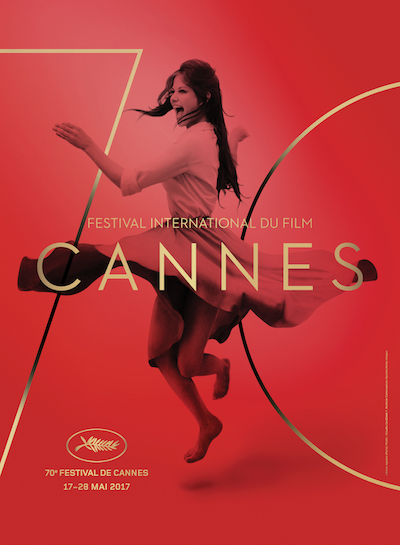
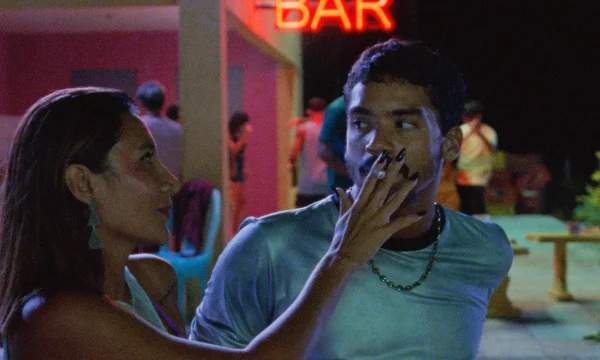
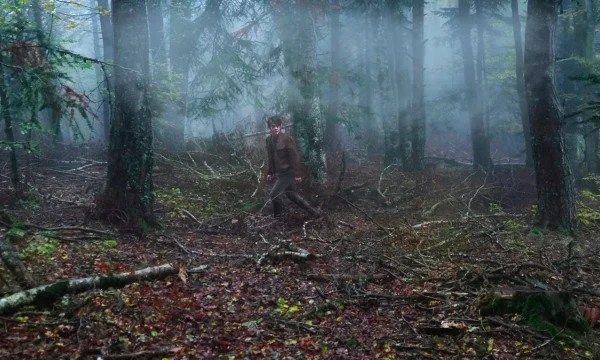
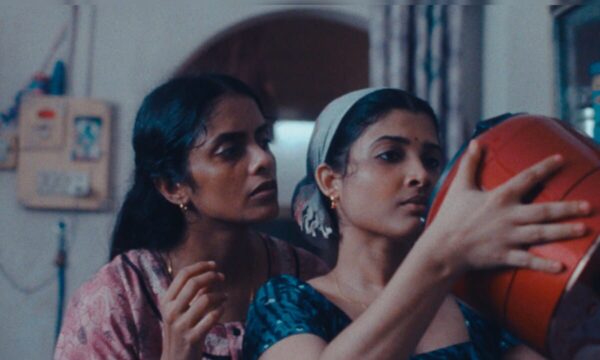
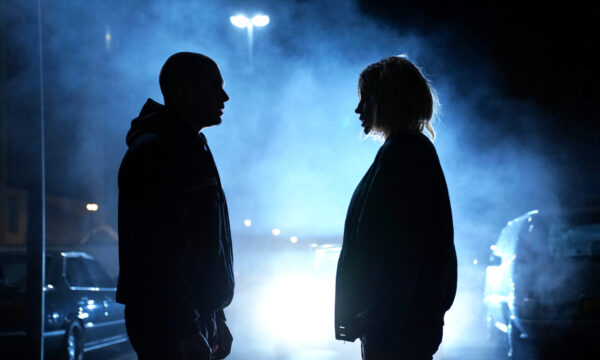
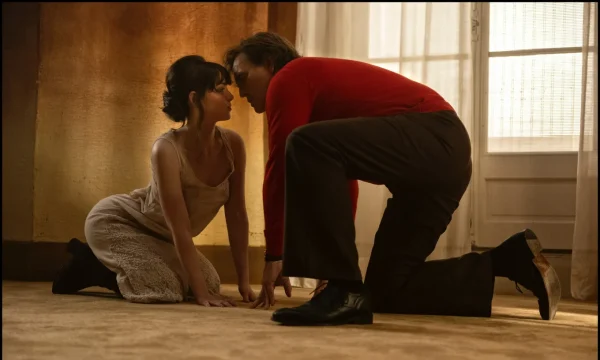
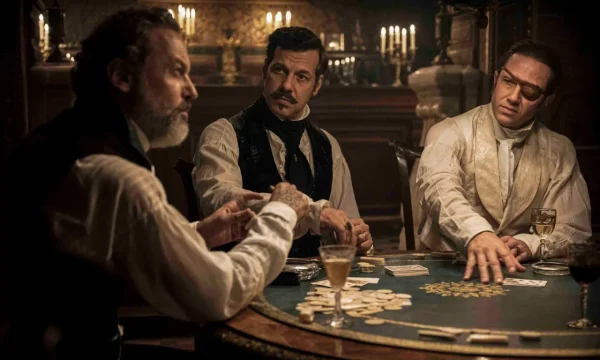
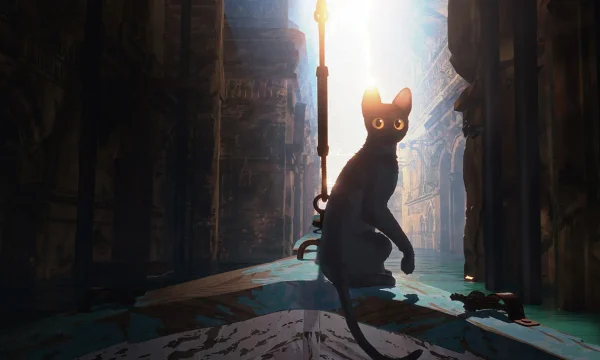
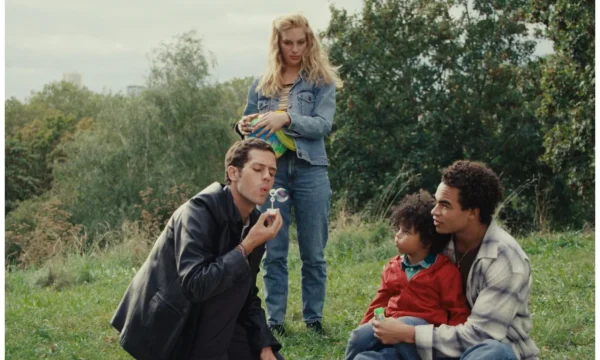
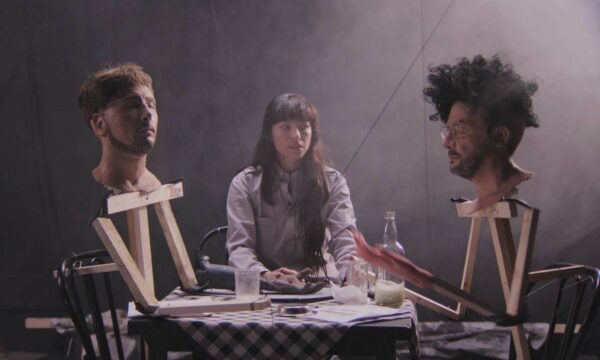


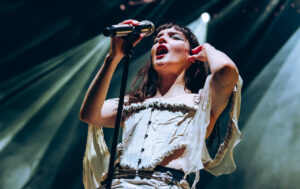

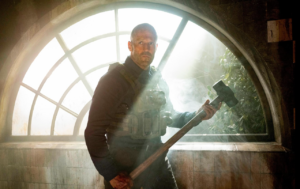






Facebook
Twitter
Instagram
YouTube
RSS